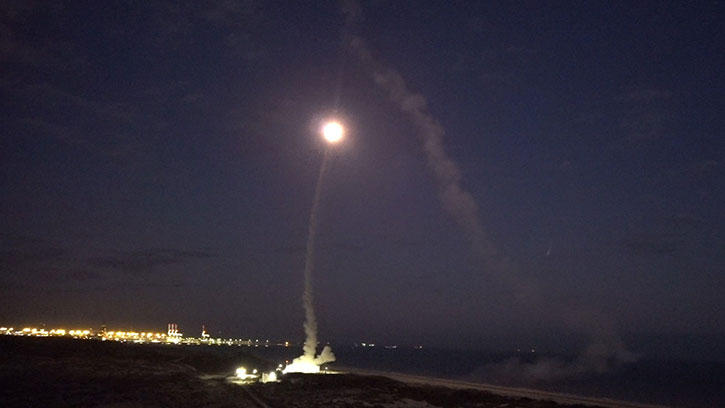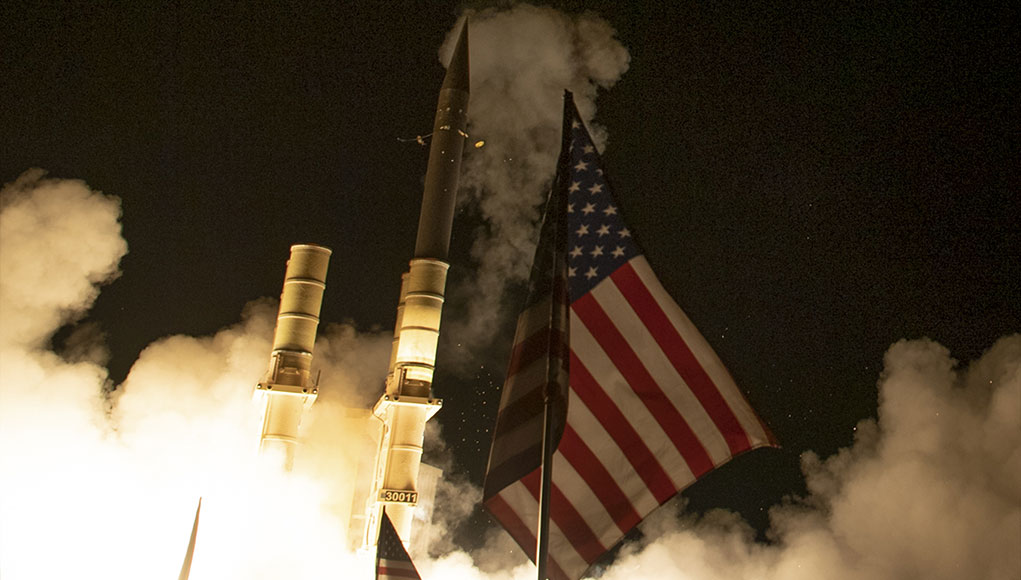Today, Israel conducted a successful flight test of the Arrow Weapon System (AWS) and the Arrow 3 interceptor, which is designed to intercept ballistic missiles outside of the earth’s atmosphere. The test was performed at a test site in central Israel, and led by the system’s prime contractor Israel Aerospace Industries (IAI). The test is a part of IDF’s multi-year plan and is portrayed as a deterrent measure and testament to Israel’s capability to respond to developing threats in the region. Arrow 3 conducted the first successful test in February 2018, this test was followed 17 months later with another test flight over the Pacific Ocean in 2019.[playht_player width=”100%” height=”90px” voice=”en-US-JennyNeural”]
The test was conducted at dawn on 18.01.22. As part of the test, the system’s operational radar array detected the target launched at Israel and transferred its data to the Battle Management Control (BMC), which analyzed that data and established a defense plan. Implementing this plan, two Arrow-3 interceptors were launched and successfully completed their missions.

[wlm_ismember]Operational since 2017, the Arrow 3 interceptor provides a quick-reaction, upper-tier exo-atmospheric defense layer of AWS. The large kinematic envelope short time-of-flight enables a large number of interception opportunities. Flying at hypersonic speed, the interceptor maintains high divert and maneuvering capability in space, using thrust vector control and dual-pulse second stage motor for an effective hit-to-kill endgame.

These capabilities provide a cost-effective defense against long-range missiles, early at their mid-course by using a ‘Shoot-Look-Shoot’ strategy, enabling the system to launch one interceptor at the target, and follow with another one, if the first has missed. Shorter range missiles are employed in a ‘Shoot-Shoot-Look-Shoot’ strategy, which requires more interceptors to achieve the high probability of kill for defense. Arrow 3 is highly effective against the missile’s warheads, including non-conventional ones. (a.k.a Iranian nukes, when they become a real threat.) IAI is developing the Arrow-4 interceptor to augment and replace the Arrow 2 on the lower tier. Together, the multi-tier defense achieved by the Arrow Weapon System (AWS) is tighter, with reaches near-zero leakage rate.[/wlm_ismember]
The IMOD statement did not mention whether the target was physically engaged and destroyed in space or in the atmosphere. Since Arrow-3 is designed to destroy its targets outside of the earth’s atmosphere, such an intercept could cause debris that may risk satellites in low earth orbit. That’s one of the reasons why such an intercept would be avoided.
[wlm_nonmember]
Subscribe to Read More about Arrow 3 and AWS
[/wlm_nonmember]According to Moshe Patel, IMDO Director, the challenging test was part of the continued enhancement and upgrading of the Arrow Weapon System and the Arrow 3 interceptor, as part of Israel’s multi-tier missile defense capabilities against emerging threats in the region. “Since the successful series of tests in Alaska in 2019, we have significantly expanded the Arrow Weapon System’s capabilities,” Patel added.
“This test was designed to challenge every element of the Arrow Weapon System, and it performed beautifully. Data collected from this test guide future development of the AWS,” said MDA Director Vice Adm. Jon Hill. “MDA remains committed to assisting the Government of Israel in upgrading its missile defense capability against current and emerging threats.”[playht_listen_button]
According to Boaz Levy, President & CEO of IAI, the system was tested against ‘future threats’, in a challenging scenario. The flight test gathered essential information that will be used by the defense establishment and the company’s engineers for the development of future technologies.




















